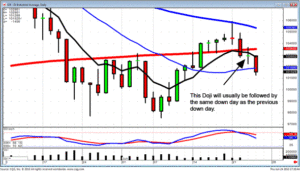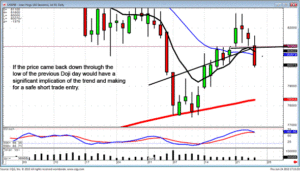What is the value of a commodity? Commodity value is the price that the commodity will fetch in the commodities markets. This market value can be predicted by use of time honored technical analysis tools such as Candlestick charting and Candlestick trading tactics. The factors that determine what the market considers to be commodity value come from fundamental analysis of commodities. A good place to learn about commodity value and about successful commodity trading is with Commodity and Futures Training. Traders buy and sell futures in commodities using Candlestick basics to help predict what the market will think a commodity will be worth in coming weeks, months, and years.
The official economic description of commodity value is its free market intrinsic value under optimal use conditions.h In buying and selling corn futures or in live cattle commodity trading the market will assume that the farmer or rancher will put his resources to best use.h In regular terms this means that in a free market the producer will do his or her best to produce a product most efficiently and economically. He or she will expect to receive more or less for his or her product based upon market demand, product availability, and product quality. In a free market traders will buy and sell futures contracts on oil futures, gold futures, interest rate futures and the like with the expectation that supply and demand will determine the spot price of the commodity at contract expiration.
Commodity value is typically stated in terms of a base currency such as the US dollar. However, as anyone who engages in Forex trading knows, currencies vary in value in relation to each other and in relation to commodities. In times of high inflation the commodity value of things such as oil and gold go up in relation to the Dollar, Euro, or Pound Sterling as traders come to expect that holding commodities will be a more secure means of protecting wealth than holding fiat currencies. Hedging by producers and buyers of commodities is the basis of the commodity market. By selling futures the producer will guarantee an income at a given commodity price at a future date. Buyers will likewise obtain a price guarantee of part, or all, of the commodity they will need in coming months or years. Airlines, railroads, and shipping lines commonly buy futures to protect themselves from the effects of inflation on the cost of fuel.
Because commodities have an intrinsic value based upon supply and demand they are most efficiently traded in free markets. When countries such as Venezuela try to control the value of their currency and commodities, black markets develop. These black markets are actually free markets which are only illegal because the country or jurisdiction in question attempts to artificially control commodity value and currency value. In Poland before the fall of Communist Eastern Europe there were continual food shortages as the government attempted to control food production and prices. However, cut flowers were plentiful and cheap. The government did not control production and the basic commodity value is what people paid for flowers.In trading commodities it is wise to remember that very basic factors will decide what a commodity will sell for on contract expiration date. This places reasonable limits on commodities trading which the wise trader will heed.
Market Direction
There are very simple price patterns that develop using candlestick signals. The simple rules applied to Doji’s make for easy trade entries and very profitable day-trades. The long-legged Doji of Monday was a clear indication the uptrend had failed at the 50 day moving average. It became more evident as the Dow sold off on Tuesday. Wednesday indicated indecisiveness in the form of a Doji day. However, this Doji becomes very informative. The downtrend had started with a strong selling day. Yesterday’s Doji indicated the Bulls and the Bears were in conflict. Yesterday’s trading was close enough to the tee line to still make it a factor. Fortunately for candlestick investors, there are expectations after a Doji day like we saw yesterday. One of the simple rules of candlestick’s is the trend will move in the direction of how they open prices the next day after a Doji. Today’s pre-market futures indicated a lower open. This was an immediate alert for adding more short positions to the portfolio.

DOW
Candlestick signals and patterns provide a set of expectations. This makes analyzing a price trend much more accurate. Had the pre-market futures showed positive trading this morning, a completely different scenario would have been put in place. The Doji, very close to the tee line, would have been indicating the tee line was going to act as a support level, had the market open positive today and traded positive. Utilizing the expected results on a day-to-day basis allows an investor to accurately assess day trades or short-term swing trades. The analysis of a price move can be evaluated with a high degree of accuracy when applying the visual characteristics of a signal in conjunction with confirming indicators.
This technique allows for low risk, high probability entry strategies. As witnessed in the entry of a short position in July Lean Hogs, a very low risk trade entry could be put in place. Note how the price had traded positive from where it opened today, creating the upward shadow. Had the price of July Lean Hogs remained positive during the day, the analysis would have been the tee line was acting as support. However, there were some indications that the Bears ‘could be’ in control.
Tuesday’s trading formed a long-legged Doji with a tweezers top. Yesterday’s trading, although somewhat indecisive, closed more than half way down the big bullish candle of Monday. This could have been evaluated as an Evening Star signal. This makes for a very low risk trade. While the price was trading positive today, putting a sell stop one tick below yesterdays low would have been a safe entry to go short.
July Lean Hogs

The logic being if the price stayed positive, then tomorrow would have warranted looking for the uptrend to continue.However, if the price came back down through yesterday’s low, that would have revealed some very important information. The price was now going to trade below the tee line and the stochastics trajectory would be more oriented toward rolling over. It was the accumulation of analysis of the past two or three trading days that would have made this a logical sell stop entry.
As a day-trader, having the ability to analyze what is occurring in the daily chart as well as the one minute chart and five minute chart, makes for extremely accurate trade evaluations. For the swing trader, anticipating the results of existing signals allows for an entry into a trade that should immediately produce profits. This factor is important for keeping the mental process clear. A price move that creates good profits immediately allows for safe stop loss levels to be implemented. This saves an investor from having the anguish of watching their trade get executed and then have the price hover around that level. This usually takes an investor’s time and energy to watch that trade much more closely, having to worry whether the price is going to bounce in the opposite direction. The use of simple trading techniques helps an investor make profits in a much more comfortable fashion.
Speak Your Mind